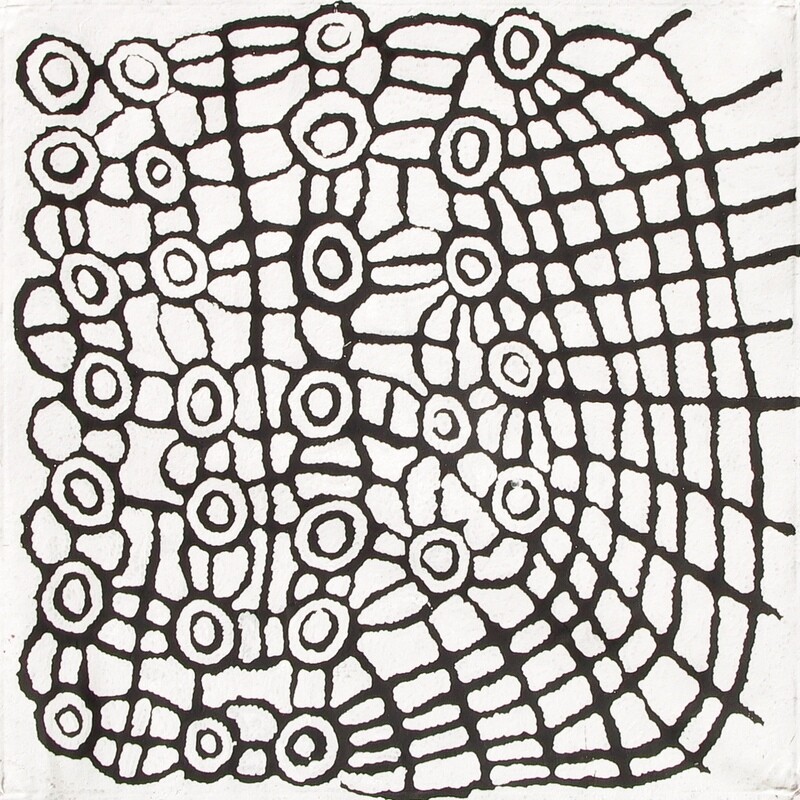Kai Kai Nampitjinpa
Kai Kai (sometimes spelled Kayi Kayi) was born in the desert around 1946, just west of Kiwirrkurra in Western Australia. She is the widow of Billy Nolan Tjapangardi, a shareholder and artist of Papunya Tula Artists. In 1999, Kai Kai contributed to the Kintore women’s painting as part of the Western Desert Dialysis Appeal.
Kai Kai began painting in 1996 and is part of the second generation of female artists, most of whom had many years of experience assisting the first generation of male painters from Papunya. These women started to emerge from the shadows of the men in the second half of the 80s, developing a sophisticated, unique, and refined style. Kai Kai has the custodial rights to paint the sacred and secret Tingari Dreamings (stories) relating to her country Kiwirrkurra.
The Tingari were a group of mythical creatures from the Dreamtime who travelled vast stretches of desert, performed sacred rituals, taught law, and shaped and created particular features in the landscape. The distinct style of Kai Kai gives these stories a unique perspective. She primarily paints rock hole Dreaming places and ceremonies associated with women. Her works depict her country at Ngaripungu and Marapinti, southwest of Kiwirrkurra.
Kai Kai Nampitjinpa’s work is held in major public and private collections, including the Museum and Art Gallery of the Northern Territory in Darwin, the Araluen Arts Centre in Alice Springs, the Gantner Myer Collection in San Francisco, Artbank in Sydney, the National Gallery of Victoria, and the University of New South Wales in Sydney. She was a finalist in the 2000 17th National Aboriginal and Torres Strait Islander Art Awards (NATSIAA) in Darwin. At the National Gallery of Victoria, two wonderful collaborative paintings by Kai Kai and other key Pintupi women painters, titled "Kanaputa" and "Ngurrapalangu," are exhibited.


